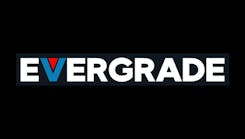In part one of this article in our January/February 2013 issue we covered various sources of vibrations and noises that may be described by your customers. We also covered radial force variation (RFV) and its causes and solutions. In this article, we will take a closer look at the types of vibration plus harshness complaints and solutions.
Vibration is a shaking or trembling that can be felt by the customer when an object/component moves back and forth or up and down consistently. Abnormal vibrations usually occur under certain vehicle operating conditions.
There are three types of vibrations:
Free vibration — a vibration that continues after the cause has been removed. For example, a tire hitting a pothole will continue to vibrate after the initial impact has passed.
Forced vibration — a vibration that only occurs as long as the force that initiated the vibration remains. For example, an unbalanced driveshaft only causes a vibration as long as it is rotating. Another example would be an unbalanced tire, which would stop vibrating when it stops rotating. Forced vibrations are the most common type dealt with in automotive applications.
Torsional vibration — vibration caused by a constant twisting force that is felt in the floor and seats of the vehicle. This type of vibration is most noticeable during hard acceleration and is amplified by the application of torque.
Under normal circumstances, a rotating component will not produce a noticeable vibration. However, if the component has improper weight distribution (imbalance) or is rotating in an eccentric pattern (out-of-round or bent), then a vibration may be produced. If the frequency and amplitude of the vibration can be measured, then those characteristics along with the vehicle speed and engine rpm at which the vibration occurs, can be matched with components that would likely cause the vibration at that particular speed. This procedure can help find the source quickly and accurately.
Vibrations are often noticed in a component far removed from where they are generated. This is called transfer path or telegraphing. For example, an out-of-balance front tire and wheel assembly may result in a noticeable steering wheel shake. In this case, we would call the wheel and tire assembly the origin (or originator), the steering linkage the conductor, and the steering wheel the reactor.
Damaged or worn engine and body mounts or a grounded exhaust hanger are components that could transmit (conduct) a normal engine vibration (originator) into the passenger compartment (reactor) as an NVH concern.
Harshness
Harshness is a concern that is related to the customer’s perception or expectation of a vehicle’s ability to absorb vibrations caused by road imperfections.
Harshness is usually the result of:
• Deterioration of vehicle components — such as worn or damaged suspension components that cannot move within their normal range of motion, or that have lost their isolating grommets or bearings.
• Modification of original equipment — such as over-sized tires or heavy-duty springs and shocks.
• Improper tire inflation — over– or under-inflated tires can cause a harsh ride.
Advanced electronic listening devices, such as the ChassisEAR, can be used to quickly identify a noise and its location under the chassis while the vehicle is being road-tested.
These versatile devices can identify the noise and location of bad wheel bearings and various problems in the differential transmission, CV joints, brakes, leaf and coil springs, transfer case, pinion bearings or carrier bearings.
For example, the ChassisEAR has a six-position input selection control switch with six microphone clamps that are attached to 16-foot leads. The leads are secured to the vehicle with clamps and Velcro ties.
The ChassisEAR provides instant comparisons between any of the six channels during the road test. The unit is equipped with headphones that block out surrounding noises.
[PAGEBREAK]
Road test with customer
Observe the following when preparing for the road test:
• Check the customer repair order before beginning the road test. It is important to know what specific concern the customer has with the automobile. This prevents correcting the wrong concern, and increasing the cost of repair.
• Do not be misled by the reported location of the noise or vibration. The cause may actually be some distance away.
• Remember that the vibrating component (originator) may only generate a small vibration. This small vibration may in turn cause a larger vibration or noise with a component (reactor), due to contact with other components (conductor).
• Conduct the road test on a quiet street where safely duplicating the noise or vibration is possible. The ideal testing route is an open, low-traffic area. It must be possible to operate the vehicle at the speed in which the condition occurs.
• If possible, lower the radio antenna in order to minimize turbulence. Inspect the vehicle for add-on items that may be creating a noise. Turn off the radio and blower for the heater and air conditioner.
Slow acceleration test
The first vehicle test used in determining an NVH concern is the slow acceleration test. This test is used to identify the noise or vibration if a road test with the customer is not possible. The steps of the slow acceleration test are:
• Slowly accelerate the vehicle to the speed where the problem occurs. Note the vehicle speed and the engine RPM. If possible, determine the frequency of the vibration.
• Attempt to identify the location of the concern (front or rear, and right or left) on the vehicle.
• Attempt to identify the noise or vibration.
Heavy acceleration test
This test is done to determine if a concern is torque related.
• Accelerate hard from 0-40 mph.
• Decelerate in a lower gear at the reported speed.
• If the concern is duplicated during this test, it is torque related.
Neutral coast down speed test
The next step when performing the road test is the Neutral coast down speed test. This test determines if an NVH concern is vehicle speed-related. The steps of the Neutral coast down speed test are:
• Drive the vehicle at a speed higher than where the noise or vibration was obvious in the slow acceleration test.
• Place the vehicle in Neutral and coast down through the speed where the concern occurs.
• If the noise or vibration exists, the concern is vehicle speed-related. This eliminates the engine and torque converter.
• If the NVH concern did not occur during the Neutral coast down speed test, perform a downshift speed test to confirm the concern as engine speed-related.
Downshift speed test
This vehicle test helps to confirm the NVH concern as engine speed-related.
The steps of the downshift speed test are:
• Stop the vehicle and place the transmission in a lower gear.
• Drive the vehicle at the engine RPM where the noise or vibration occurs.
• If the noise or vibration exists, the concern is engine speed-related. This eliminates tires, wheels, brakes, and suspension components.
• If necessary, repeat the test using other gears and Neutral to confirm the results.
Steering input test
This test determines how wheel bearings and other suspension components contribute to a vehicle speed-related condition. The steps of the steering input test are:
• Drive the vehicle at the speed where the NVH concern exists, while making sweeping turns in both directions.
• If the concern goes away or gets worse, wheel bearings, hubs, U-joints (contained in the axles of 4WD applications), and tire tread wear can be the components causing the concern.
Road test over bumps
The road test over bumps is used to help isolate a noise that occurs when going over a rough road or a bump. By driving the vehicle across a bump or dip diagonally, one wheel at a time will hit the bump or dip. This will isolate the noise to one quadrant of the vehicle.
• To determine if the noise is coming from the front or the back, drive only the front or rear wheels over a bump.
• To determine if the noise is on the left or the right, drive one wheel over a bump.
[PAGEBREAK]
Engine run-up tests
Engine run-up tests are performed on a hoist with an accurate tachometer connected to the engine. Even if the vehicle has a tachometer, it is a good idea to use one that has clearly defined increments of less than 50 rpm so that an exact reading of engine speed can be recorded. Engine speed will be an important factor in arriving at a final conclusion.
Perform the Neutral run-up and engine loaded tests if the NVH concern is engine speed-related.
Neutral run-up test
Use the Neutral run-up test as a follow-up to the downshift test or when the NVH concern occurs at idle. The steps of the Neutral run-up test are:
• Increase the engine rpm while in Park on front wheel drive vehicles, or Neutral on rear wheel drive vehicles.
• Make note of the rpm and frequency of the NVH concern.
Engine loaded test
The second in-shop test is the engine loaded test. This test may help reproduce engine speed-related concerns not evident with the Neutral run-up or Neutral coast down tests.
The engine loaded test also identifies noise and vibration sensitive to engine load or torque. These NVH concerns often appear during heavy acceleration or when climbing a hill.
WARNING: Block the front and back wheels, or injury to personnel may result. Do not exceed five seconds when performing the engine loaded test or damage to the transaxle may result.
The steps of the engine loaded test are:
• Block the front and back wheels.
• Apply the parking and service brakes.
• Put the transmission in Drive and increase the engine rpm to where the NVH concern appears. Make note of the rpm and frequency of the NVH concern.
• Be sure to perform the test in Drive and then in Reverse. If the noise or vibration occurs, check engine and transaxle mounts.
• If the concern is definitely engine speed-related, perform the engine accessory test to narrow down the trouble source.
Engine accessory test
Noises from specific accessories can usually be identified with electronic listening devices, such as the EngineEAR.
CAUTION: Block the front and back wheels, or injury to personnel may result. Limit running time with belts removed or overheating may result.
The steps of the engine accessory test are:
• Remove the accessory drive belts.
• Increase engine rpm to where the NVH concern is obvious.
• If the vibration occurs, the belts and accessories are not the source.
• If the belts and accessories are the source of the NVH concern, continue to add or remove specific accessory belts to locate the concern.
NOTE: Some of the information provided here was gleaned from Toyota and Ford training materials. ●



